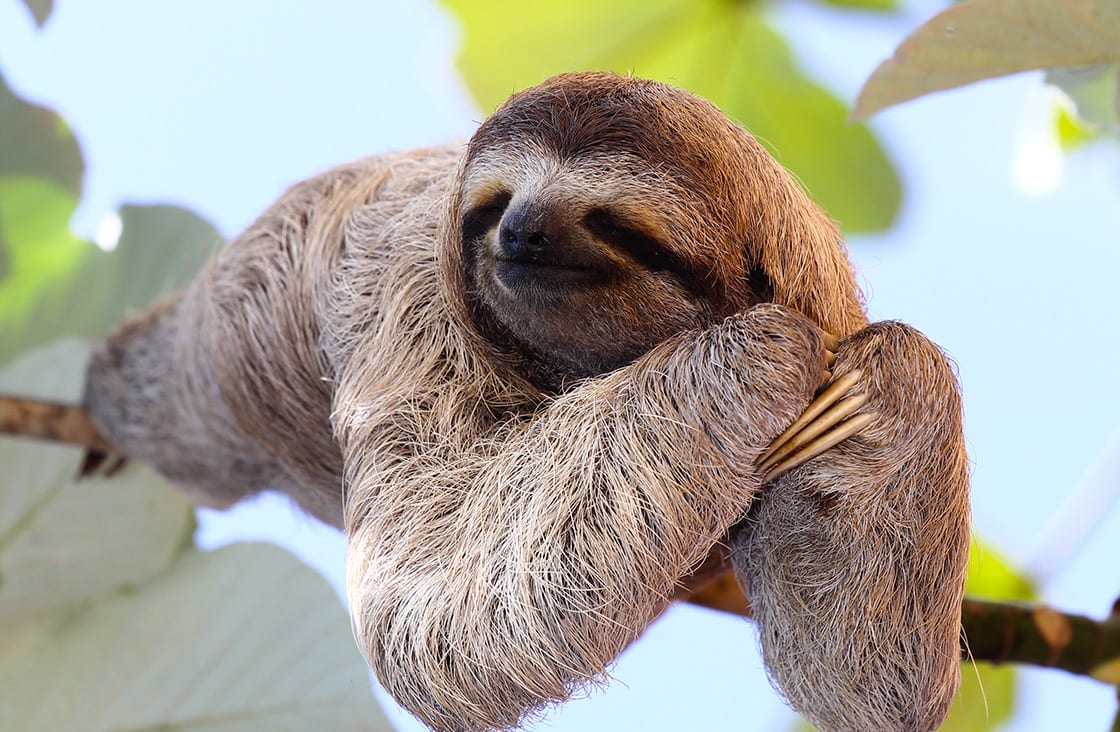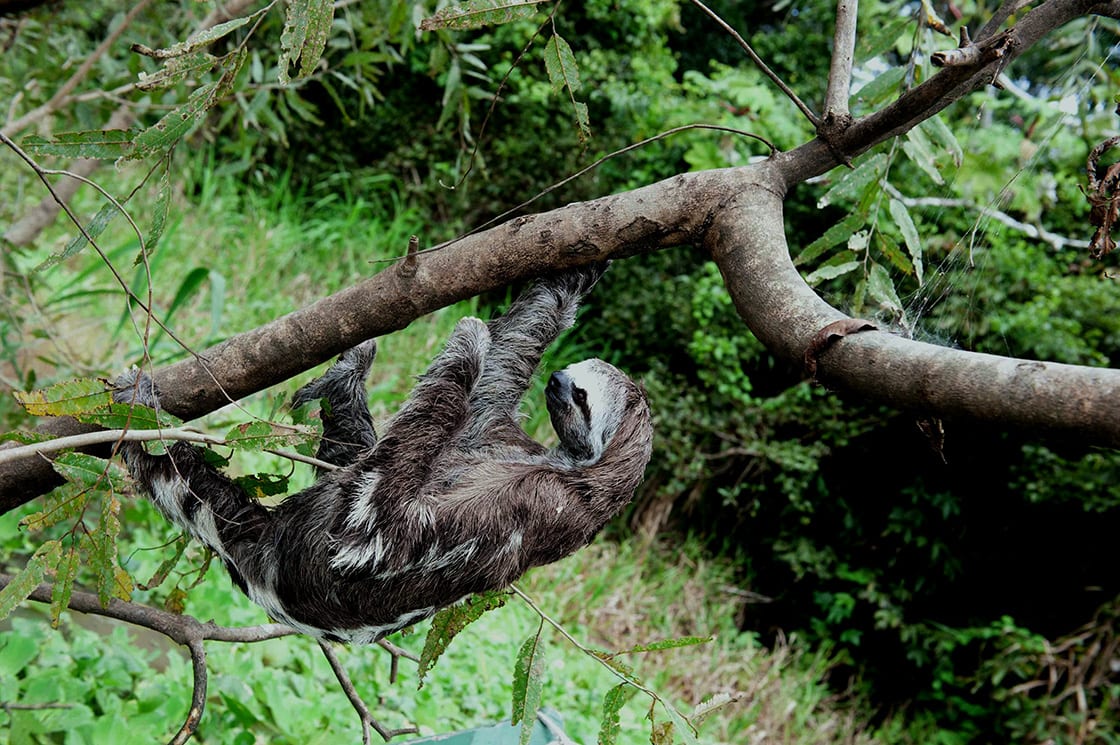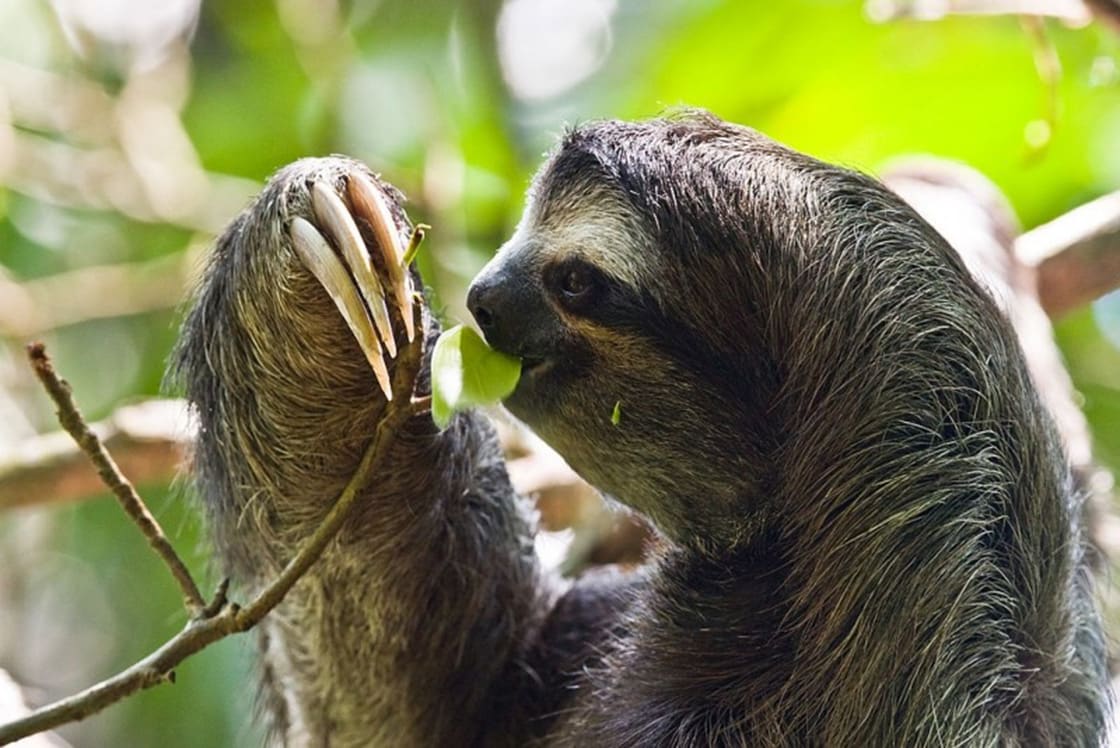
The Amazon rainforest is known for its incredible biodiversity and is home to a rich assortment of fascinating wildlife. The sloth, a crowd favorite, is one of the most interesting animals that call the Amazon home. These slow-moving tree-dwellers, aptly named after their very leisurely pace of life, top the list of exotic animals that travelers can see on vacation in the Amazon and won’t want to miss! Read on for sloth facts, photos, and everything else you need to know about sloths in the Amazon!

Three-Toed Soth
There are two different types of sloths, two-toed and three-toed, and six species:
All of these species can be found in the Amazon, however, the pygmy sloth is critically endangered and the maned sloth is currently listed as vulnerable.
A bit of a trick answer, because actually, all sloths have three-toes (even the “two-toed” ones!). The difference is that the two-toed sloths only have two claws on their forelimbs, whereas the three-toed sloths have three claws on their forelimbs. However, they all have three claws on their hind-limbs (three “toes”). A more accurate description? Two-finger and three-finger sloths!
The confusion comes from how we translate the animal’s name from Spanish into English. In Spanish, the word “dedos” is used for both fingers and toes. So what should have been translated to “finger” was mistakenly translated to “toe”, and it’s too late to take it back now!

Sloths move very slowly. It takes them about a minute to climb only 6 to 8 feet
Some of the least-active animals out there, sloths sleep from 15 to 18 hours each day! Some even stay in the same tree their entire life.
Their huge hooked claws and lanky arms enable them to spend most of their time hanging from tree branches. Awake or asleep, they won’t lose their grip. In fact, researchers recently found that even after death they retain their grip! After they have died, sloths can sometimes be found hanging from tree branches just where they were when they were alive.
When sloths are sleeping for their usual 15-18 hours per day, they are upside-down. But that’s not all. Mother sloths give birth to their babies while hanging upside-down!
Now the size of a household pet, the ancient ancestors of today’s sloths were hardly as docile. As recently as 10,000 years ago, the giant sloth roamed South America. Described as being between the size of a rhinoceros and a small elephant, the “opportunistic carnivores” don’t sound as cute and cuddly as their modern-day counterparts.
Being lazy and spending all of your time in a tree doesn’t exactly lead to the cleanest coat. If you’re wondering why these gray and brown-haired mammals sometimes have a greenish tint, it’s because their coats have a part-time job as a habitat for colonies of symbiotic algae! Their body has a deep groove for housing the algae, whose color is meant to help the animals camouflage with their environment in the Amazon’s rainy season.

It takes days for them to process what other animals can digest in a matter of hours
Part of that slothful persona is a very slothful diet. It takes so long for a sloth to digest the food it eats (and to eat enough to get the nutrients that it needs) that it only has to go to the bathroom about once a week! This is usually one of the few times the sloths will leave their tree.

….
Well, almost. Three-toed sloths can turn their necks up to 270 degrees in either direction! This is due to three extra vertebrae than their two-toed counterparts.
When looking for mates, female sloths emit a bloodcurdling scream that can be heard for 700 meters! Talk about putting yourself out there.

Sloths can swim three times faster than they can walk on land
Known to sometimes simply let go from their tree branch and drop into the water below for a quick swim, they can move three times faster in water than they can on land. It must come from their ancestors; one type of ancient sloth spent all of their time in the water.
The pygmy three-toed sloth is endangered, and only 79 individuals are said to be remaining. You can symbolically adopt a Sloth from the World Wildlife Fund and donate to help protect this endangered species.
And that’s just the start of why sloths are such an interesting representation of the wildlife in the Amazon. Want to learn more, or better yet, see these incredible creatures for yourself? You can! Rub shoulders with them in the rainforest canopy at the Treehouse Lodge, or spot sloths in their natural habitat on the riverbanks of the Amazon on skiff excursions from an Amazon cruise.
While Rainforest Cruises aim to provide accurate and up-to-date information, we make no representations as to the accuracy or completeness of any information herein or found by following any link on this site. Rainforest Cruises cannot and will not accept responsibility for any omissions or inaccuracies, or for any consequences arising therefrom, including any losses, injuries, or damages resulting from the display or use of this information.




